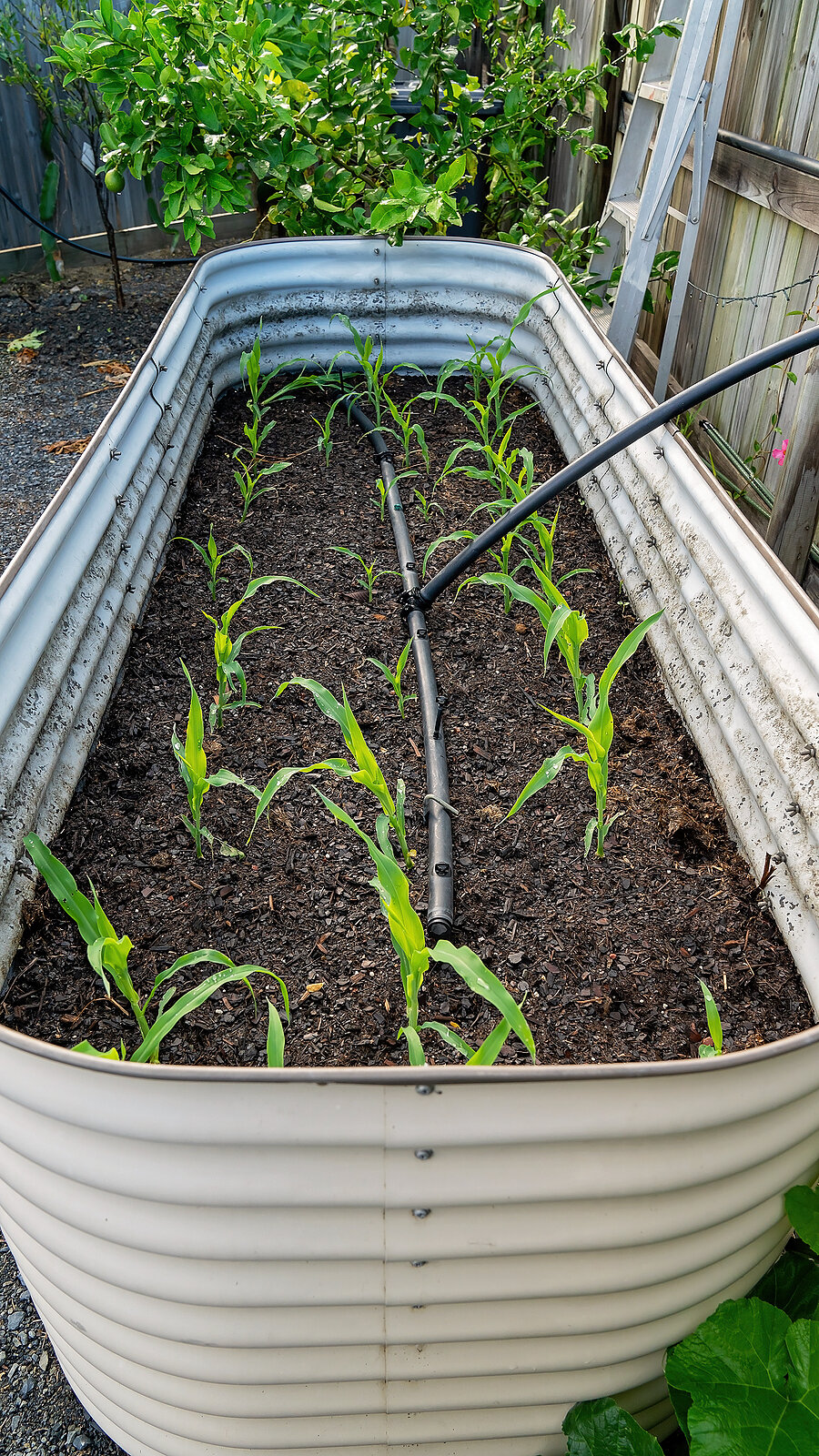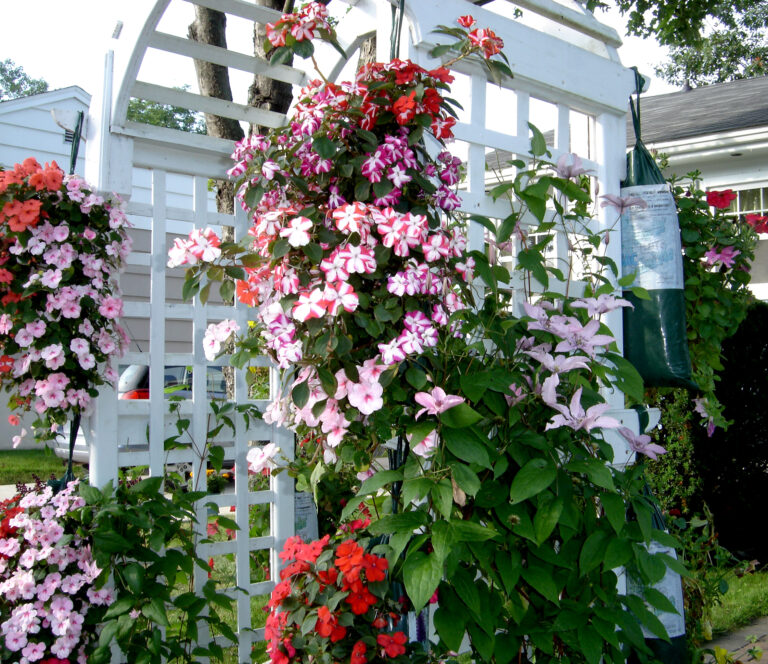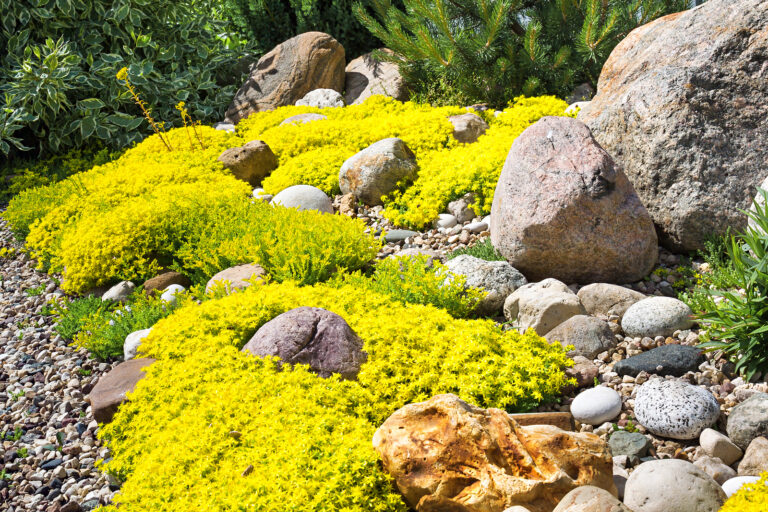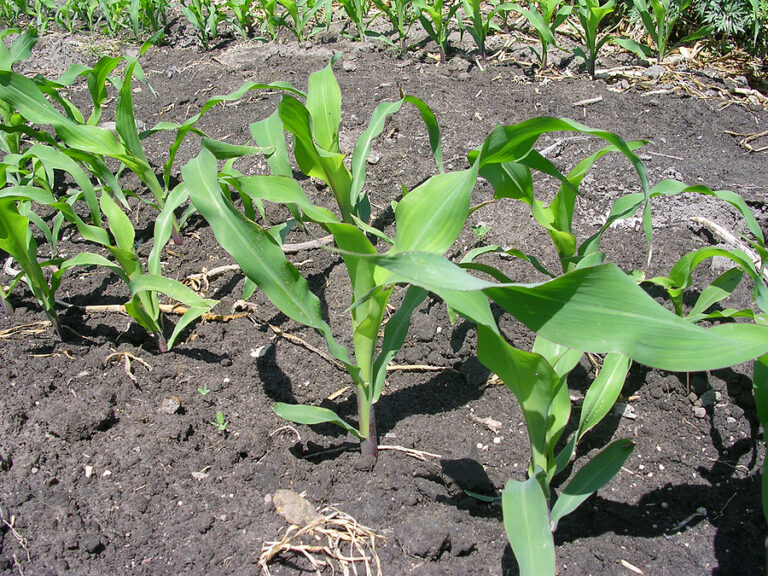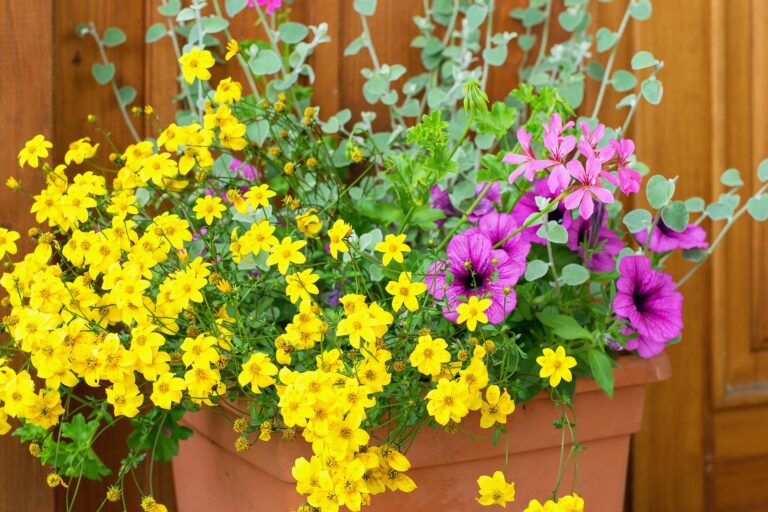Can You Grow Corn in Containers? Yes-Here’s How
It might seem impossible to grow towering sweet corn stalks on a patio, balcony, or small urban garden—but it can be done! While corn is traditionally a field crop, with the right setup, variety, and a few pollination tricks, you can enjoy homegrown sweet corn in a container. It’s a fun challenge for container gardeners, and nothing beats pulling your own ears of corn straight from the stalk.
Is Container Corn Practical?
Let’s be honest—corn isn’t the most practical crop for containers. Corn plants are tall, need plenty of sunlight, and are wind-pollinated, which usually works best when planted in blocks of many rows. But if you’re short on space and up for a rewarding project, sweet corn can be grown successfully in containers. You just have to tweak the process to suit a smaller setup.
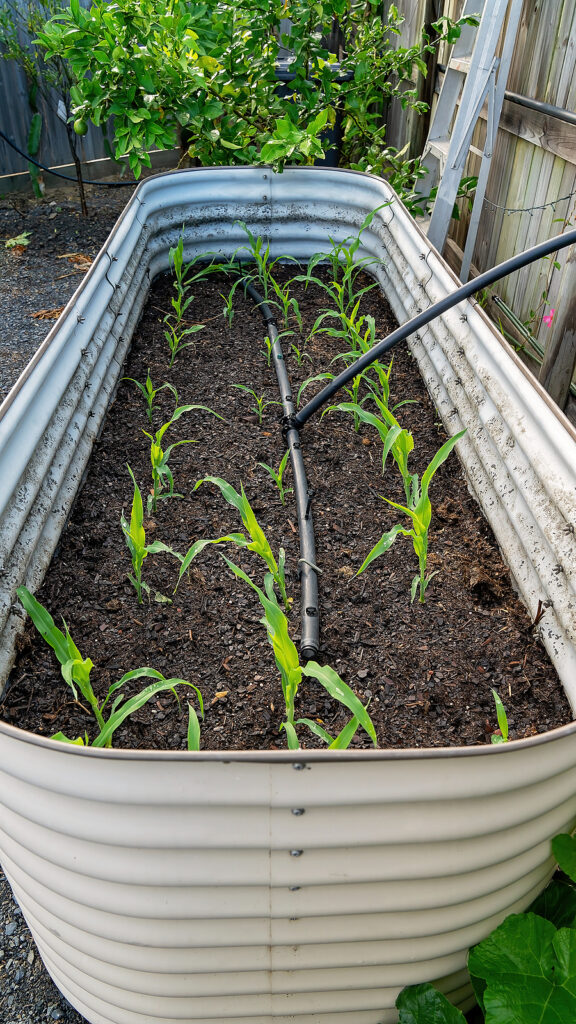
Choosing the Right Container
A 5-gallon bucket or container is the minimum size for growing corn. Make sure it has drainage holes and is at least 12 inches deep. Larger is better—especially if you can cluster several containers together. A whiskey barrel planter or fabric grow bag is ideal.
Fill your container with a rich, well-draining potting mix amended with compost. Corn is a heavy feeder, so starting with nutrient-rich soil gives it a head start.
Planting Sweet Corn in a Container
Plant 5 or 6 seeds evenly spaced in your container about 1 inch deep. Thin to the strongest 3 or 4 seedlings once they’re 3 to 4 inches tall to give each plant room to grow.
Choose a short or dwarf variety of corn for the best results in containers. Look for early-maturing types like:
- Early Sunglow (63 days)
- Sugar Buns (70–80 days)
- Sweetie (82 days)
These shorter varieties still produce sweet, tender ears but don’t require as much root space or height support.
Sunlight and Watering
Corn loves the sun—6 to 8 hours a day is essential. Place your container in the sunniest spot you have. Water regularly and deeply. Containers dry out quickly, especially in hot weather, so check the soil daily and keep it evenly moist. Consider adding a layer of mulch to retain moisture.
Corn is a heavy feeder, so plan to fertilize every 2–3 weeks with a balanced fertilizer or one higher in nitrogen to support leafy growth.
Pollination Tips for Container Corn
Pollination is the trickiest part of container-grown corn. Corn is wind-pollinated, and in a garden setting, it’s typically planted in blocks so the wind can do its job. In containers, you’ll need to hand-pollinate for best results.
Here’s how:
- When the tassels (the feathery tops) appear and begin shedding pollen, gently shake them over the silks (the hairy threads emerging from the ears).
- Do this daily for several days to ensure all silks are pollinated.
- Use a small brush or your fingers if needed to dust pollen onto the silks.
Harvesting
Your container corn should be ready to harvest about 3 weeks after the silks appear and begin to brown. Squeeze an ear—if the kernels feel full and release a milky juice when punctured, it’s ready to pick. Harvest and eat right away for the sweetest flavor!
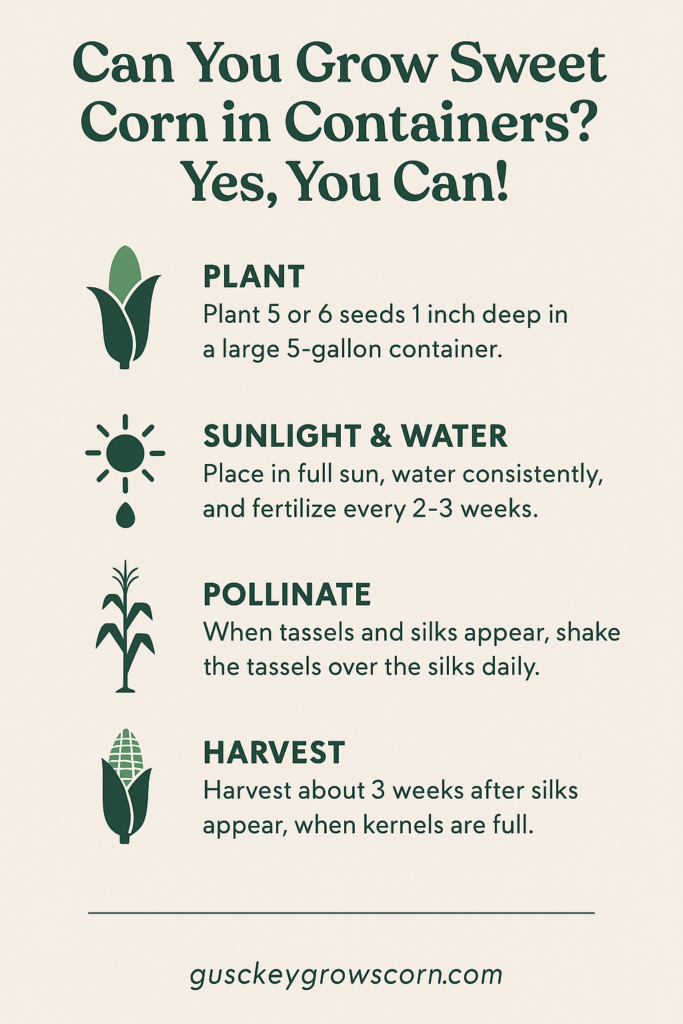
Final Thoughts
Growing corn in containers might take a bit more attention, especially when it comes to pollination and feeding, but the experience of growing this classic summer crop in a small space is well worth it. You won’t get a huge harvest—but you will get fresh, sweet corn and the joy of watching it grow from seed to table.
Whether you’re an urban gardener, a patio grower, or simply short on garden space, sweet corn in a container is a delicious and rewarding experiment to try.
Overview Post: How to Grow Corn: The Complete Guide from Planting to Harvest
🌽 Related Posts: Explore More on Growing Corn
🌱 Getting Started with Corn
- Starting Sweet Corn from Seed: Proven Tips for Early Success
- When and Where to Plant Sweet Corn for the Best Yield
- Planting Sweet Corn: Spacing, Block Planting, and Depth Tips
- Can You Grow Corn in Containers? Yes-Here’s How
💧 Watering, Feeding, Pollination & Care
- How to Water and Fertilize Sweet Corn for Maximum Yield
- Sweet Corn Pollination: Natural and Hand-Pollination Tips
- The Best Companion Plants for Sweet Corn (And What to Avoid)
- What To Do When Corn Falls Over (Lodging Tips)
🌽 Harvest, Storage & Serving
- How to Harvest and Store Sweet Corn
- How to Store Fresh Corn and Preserve It for Later
- Seven Easy Wasy to Cook and Serve Sweet Corn
🐛 Pests, Diseases & Troubleshooting
🌟 Sweet Corn Varieties

